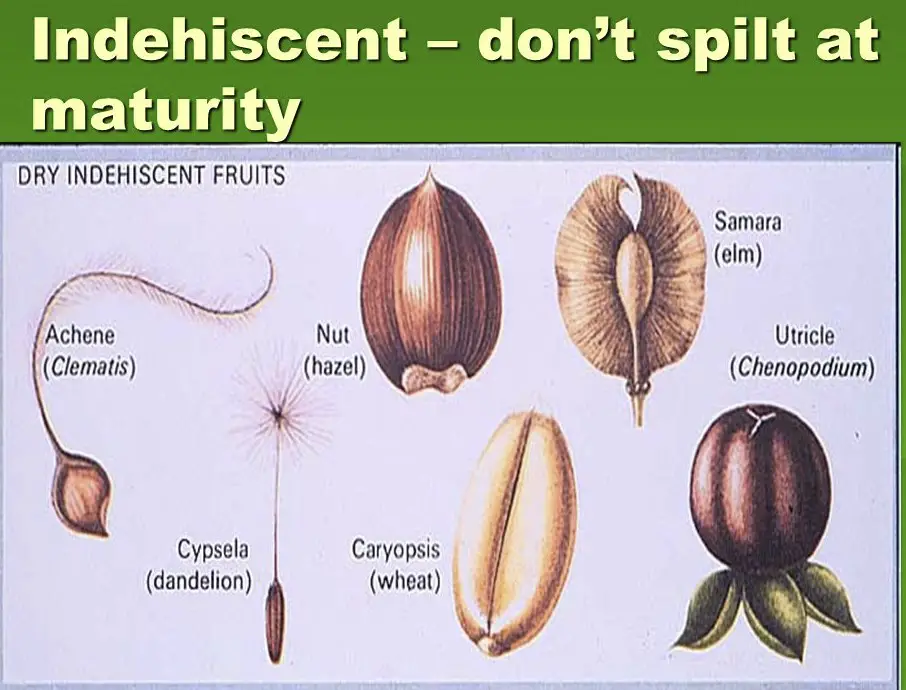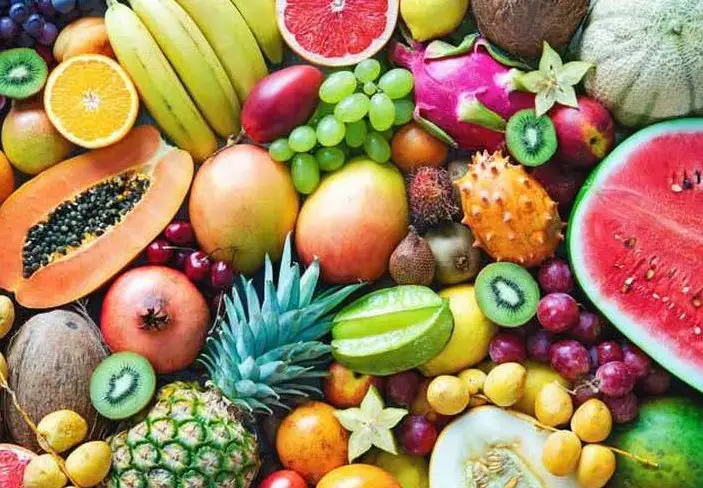The diversity of fruit types across the plant kingdom offers a fascinating glimpse into the intricate mechanisms of nature’s seed dispersal strategies. Fruits, the bearers of seeds, play a pivotal role in ensuring the survival and proliferation of plant species. By adopting various methods to spread their genetic material across different terrains, plants have evolved with fruits that either burst open to release their seeds or keep them enclosed, safeguarding them until conditions are ripe for germination.
The difference between dehiscent and indehiscent fruits lies in their method of seed dispersal. Dehiscent fruits are characterized by their ability to split open at maturity and release their seeds into the environment. In contrast, indehiscent fruits retain their seeds within a hardened shell or flesh, relying on external forces such as animal ingestion or mechanical pressure to aid in seed release and dispersal.
This distinction is more than just a botanical curiosity; it reflects the adaptive strategies plants use to thrive in diverse ecosystems. Dehiscent fruits, often equipped with mechanisms that propel seeds away from the parent plant, maximize the chances of colonization in new areas. Indehiscent fruits, on the other hand, tend to rely on the movement of animals or environmental forces to facilitate seed dispersal, often resulting in a more targeted and sometimes nourished introduction to new growing sites. The evolutionary rationale behind these strategies highlights the intricate balance between plant survival and the broader ecological system.

Fruit Basics
Definition and Role
A fruit is the mature ovary of a flowering plant, usually containing seeds. By botanical standards, fruits are the means by which plants disperse seeds to new growing locations. This definition is broader than the common culinary distinction between fruits and vegetables, which is based more on taste and usage than on botany.
Fruits play a crucial role in the reproductive cycle of plants, housing seeds until they can be spread to locations where they can germinate and grow into new plants. Seed dispersal, facilitated by fruits, is a key component in the survival and proliferation of plant species, allowing them to expand their range and adapt to new environments.
Classification Overview
Fruits can be classified based on various criteria, such as their structure, development, and, most relevant to our discussion, their seed dispersal methods. One primary classification divides fruits into two broad categories: dehiscent and indehiscent.
This distinction hinges on how the fruit releases its seeds. Dehiscent fruits open up to release their seeds, while indehiscent fruits do not open at maturity, requiring external forces to disperse their seeds. This classification offers insight into the evolutionary strategies plants use to ensure the spread and germination of their offspring.
Dehiscent Fruits
Definition
Dehiscent fruits are those designed to open up and release their seeds upon reaching maturity. This opening can occur through splitting, cracking, or other mechanisms, depending on the type of fruit. The primary goal of this design is to facilitate seed dispersal. By releasing seeds into the environment, these fruits increase the likelihood that their seeds will find suitable conditions for germination away from the parent plant, reducing competition and spreading the species to new areas.
How They Open
The mechanisms by which dehiscent fruits open can vary greatly:
- Splitting: Many dehiscent fruits have built-in lines of weakness along which they split open. This splitting can be longitudinal, transverse, or irregular.
- Drying: Some dehiscent fruits rely on the drying out of the outer layer, which contracts and cracks, releasing the seeds.
- Pressure: In some cases, the internal pressure from the seeds themselves pushes against the fruit casing until it bursts open.
These mechanisms are often influenced by environmental factors such as humidity, temperature, and physical disturbances.
Common Examples
- Pea Pods: Classic examples of dehiscent fruits, pea pods split along their seam to release the peas (seeds).
- Poppy Capsules: These release seeds through small openings that act like a pepper shaker.
- Okra: The pods split open to disperse seeds when dried or mechanically disturbed.
Indehiscent Fruits
Definition
In contrast, indehiscent fruits do not open at maturity. Their seeds are released only when the fruit decays or is broken open by external forces. This strategy relies more on the movement of animals, weather events, or mechanical forces to facilitate seed dispersal. Indehiscent fruits often have hard, protective shells or fleshy exteriors that safeguard the seeds during dispersal processes.
Seed Retention
Indehiscent fruits retain their seeds for several reasons:
- Protection: The hard or fleshy exterior protects seeds from predation and environmental hazards.
- Targeted Dispersal: Seeds are more likely to be dispersed to specific locations, such as through animal digestion or by floating to suitable growing spots.
- Delayed Germination: By retaining seeds until conditions are optimal for germination, these fruits enhance the survival prospects of their seeds.
Common Examples
- Nuts (like acorns and hazelnuts): These have hard shells that protect the seed until it’s broken open.
- Grains (such as wheat and rice): The seeds remain enclosed in a protective covering.
- Samara: Winged fruits like those of the maple tree, where the seed is encased in a lightweight structure designed to be carried away by the wind.

Comparative Analysis
Opening Mechanisms
The methods by which dehiscent and indehiscent fruits release their seeds highlight the diversity of plant reproductive strategies. Dehiscent fruits open spontaneously when mature, using natural lines of weakness in their structure to split apart. This can happen through drying out, which increases tension within the fruit wall until it bursts, or through the buildup of internal pressure. Indehiscent fruits, however, do not open naturally but rely on external forces such as being eaten by animals or decomposing, which helps to release the seeds from their protective casing.
Seed Dispersal Strategies
The dispersal of seeds is crucial for the propagation of plant species, and the mechanism of seed release plays a significant role in this process. Dehiscent fruits often employ methods that allow for wind or water to carry seeds away from the parent plant, reducing competition and spreading the species to new locations. Some have evolved to eject seeds forcefully, ensuring a wider dispersal range. In contrast, indehiscent fruits may depend more heavily on animals, who eat the fruits and later excrete the seeds at a distance from the original plant. This not only spreads the seeds but also often provides them with a nutrient-rich environment to support germination.
Ecological Impact
Both dehiscent and indehiscent fruits have evolved to fill specific ecological niches, playing integral roles in their environments. Dehiscent fruits, by enabling seeds to travel far from their parent plants, can colonize new areas quickly, especially in disturbed environments. This makes them pivotal in the early stages of ecological succession. Indehiscent fruits, meanwhile, foster close relationships between plants and animals, contributing to the biodiversity of ecosystems. The dependency on animals for dispersal promotes a variety of interactions, including pollination and feeding relationships, which are essential for the maintenance of healthy ecosystems.
Significance in Agriculture
Crop Selection
Understanding whether a plant produces dehiscent or indehiscent fruits is vital for farmers and breeders, influencing crop selection and breeding strategies. Crops with dehiscent fruits might be favored in scenarios where easy seed collection and processing are paramount.
Conversely, indehiscent fruits might be preferred for their prolonged shelf life and ease of transport, important factors for commercial fruits and vegetables. Moreover, the choice between dehiscent and indehiscent varieties can affect the resilience of crops to pests, diseases, and environmental conditions, guiding breeding programs towards more sustainable agriculture practices.
Harvesting Techniques
The nature of a fruit’s seed dispersal mechanism directly impacts harvesting techniques and post-harvest management. Dehiscent fruits require timely harvesting to prevent seed loss, often necessitating more labor-intensive or mechanized collection methods to capture seeds before they disperse. On the other hand, indehiscent fruits generally allow for more flexibility in harvest timing but may require additional processes to extract the seeds from the fruit or ensure their release into the soil. Understanding these differences can lead to more efficient farming practices and reduce waste and labor costs.
Home Gardening Tips
Choosing the Right Type
For home gardeners, selecting the appropriate type of fruit plants can greatly enhance the gardening experience and yield. Considerations such as climate and soil type are crucial when deciding between dehiscent and indehiscent fruit plants.
For example, plants with dehiscent fruits may be more suitable for areas with dry climates where their seed dispersal mechanisms can function effectively. In contrast, plants that produce indehiscent fruits might be preferred in regions with abundant wildlife, leveraging animals as natural dispersers. Understanding the specific needs and behaviors of different fruit types can lead to more successful and enjoyable gardening.
Care and Maintenance
Proper care and maintenance of plants, depending on their fruit type, can make a significant difference in a garden’s productivity and ecological impact. For plants with dehiscent fruits, strategies might include monitoring moisture levels to prevent premature seed dispersal and implementing companion planting to enhance biodiversity and reduce pests.
For indehiscent fruit plants, incorporating measures to attract beneficial animals for seed dispersal, such as building bird feeders or creating habitats for small mammals, can be beneficial. Additionally, understanding the specific nutritional and light requirements of each plant type will ensure healthier growth and better yields.
Frequently Asked Questions
What Are Dehiscent Fruits?
Dehiscent fruits are those that open up on their own when they mature to release the seeds they contain. This natural process allows the seeds to be dispersed by various means, such as wind, water, or gravity. Common examples include pods of peas and beans, which split open along a seam to scatter their seeds far from the parent plant.
How Do Indehiscent Fruits Disperse Seeds?
Indehiscent fruits do not open at maturity; instead, they rely on external factors like animal consumption or decay to release their seeds. These fruits, such as nuts and grains, often remain whole and intact, requiring physical forces or biological agents to break them open, thereby assisting in the dispersal of seeds to new locations.
Why Is Knowing the Difference Important?
Understanding the difference between dehiscent and indehiscent fruits is crucial for various reasons, including agriculture, horticulture, and conservation. It influences decisions regarding crop selection, breeding, and cultivation methods. Moreover, this knowledge aids in the conservation of plant diversity and the management of natural ecosystems by understanding how different plants spread and colonize new areas.
Conclusion
The contrast between dehiscent and indehiscent fruits underscores the complexity and diversity of plant reproductive strategies. These mechanisms reflect millions of years of evolutionary adaptation, tailored to ensure the successful dispersal of seeds and the continuation of species. Recognizing and appreciating these differences not only enriches our understanding of the natural world but also enhances our ability to make informed decisions in agriculture, conservation, and horticulture.
In essence, the study of these fruit types opens a window into the ecological dynamics of plant life, offering insights into the interactions between flora and the environment. As we continue to explore and understand these relationships, we unlock the potential for innovative agricultural practices, effective conservation strategies, and a deeper appreciation for the intricate web of life that sustains our planet.
